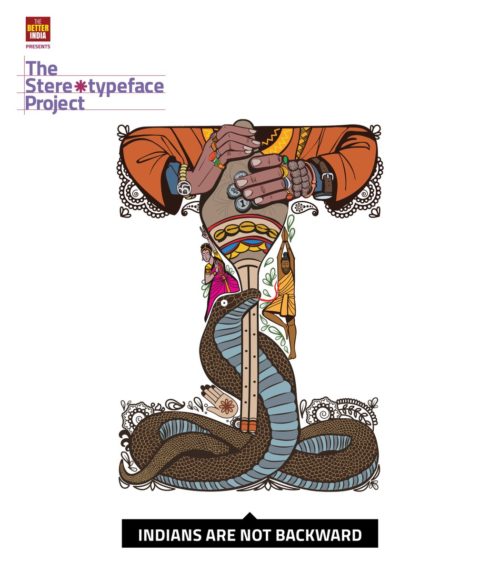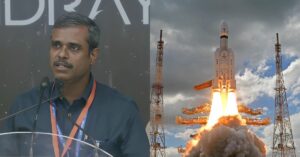One Stereotype at a Time: Meet the Female Scientists Putting India on the Global Map
From Kaur, Karidhal to Somasundaram, female scientists are helping shed the infamous notion that ‘India is a land of snake charmers’.

When Seetha Somasundaram, the Program Director, ISRO Space Science Program Office, successfully led the Mars Orbiter Mission (MOM) to Mars, she put to rest all kinds of stereotypes associated with India.
Some of them were—Indian women remain confined to homes, science is a male-dominated field, India is a country of poor and hungry people, it is a land of sadhus, and that superstitions still rule people’s lives and more.
MOM, also called Mangalyaan, is a space probe orbiting Mars since 24 September 2014. It was launched on 5 November 2013 by the Indian Space Research Organisation (ISRO). It is the country’s first interplanetary mission, making ISRO the fourth space agency to reach Mars, after Roscosmos, National Aeronautics and Space Administration (NASA), and the European Space Agency (ESA).
It also made India the first Asian nation to reach Martian orbit and the first nation in the world to do so in its maiden attempt.

From time constraints to precise mathematical calculations that would avoid a clash into Mars, MOM had its own share of challenges, but the female scientist dealt with them with ease and composure.
“It was a race against time because we were all first-timers working for an interplanetary mission. We wanted to get into capture orbit in the sense that [the] orbiter remains around Mars. We were relieved and happy that [the] launch vehicle had put us in the right orbit,” says Nandini Harinath, in a short film that is a part of Breakthrough: Portraits of Women in Science series. She is the Project Manager, Mission Design and Deputy Operations Director, MOM.
“We needed [a] certain velocity to get out of [the] earth’s sphere of influence, and we couldn’t do it in one shot because our engine wasn’t that powerful, so we had to gain that energy slowly. So every time we went around the earth, we would fire the engine to get that extra energy. So after six such burns, the orbiter had enough velocity to exit [the] earth’s sphere, and it went into the cruise. It was like hitting bulls-eye on a dartboard that was 10,000 km away,” she adds.
After playing an integral part in Mangalyaan, women scientists at ISRO are all set to play a similar role in the space mission, Chandrayaan 2.

Project Director M Vanitha and Mission Director Ritu Karidhal will be steering the country’s second mission to the moon on July 15 at 2.15 AM from Sriharikota, Andhra Pradesh. It is scheduled to land on the moon’s surface on 6 September 2019.
While Vanitha is responsible for the project from its inception to completion, Karidhal will oversee it and act as a coordinator between the various agencies involved. The mission is said to be the most challenging one yet, as it will attempt to explore the unexplored region of the lunar south pole.
Vanitha and Karidhal, both in their 40s, have been with the ISRO for nearly two decades and set to script a historic achievement.
While the ISRO women are taking India to other planets by busting the myth that ‘Mars is for Men’, Manjit Kaur, a physicist, is making India proud by making contributions in the world of energy and force.
In an era where girls were not allowed to attend college, let alone work, Manjit Kaur of Panjab University, was accepted at CERN, one of the world’s largest and most respected centres for scientific research.

Manjit Kaur was a part of the team that discovered the ‘God’ or Higgs particle experiment at the Large Hadron Collider (LHC) in a tunnel at the Geneva Laboratory in Switzerland. In 2013, the Nobel Prize in Physics was awarded jointly to François Englert and Peter W Higgs “for the theoretical discovery of a mechanism that contributes to our understanding of the origin of mass of subatomic particles”.
From Kaur, Karidhal to Somasundaram, female scientists are helping shed the infamous notion that ‘India is a land of snake charmers’. It is high time that we declare the days of orientalism passe!
India is more than ‘mystical’. It is the world’s largest democracy, an established hub for IT and medicine, home to several Nobel laureates, scientists, CEOs of very prominent multinational corporations, and internationally acclaimed actors, authors and artists.
Also Read: Indian-Origin Scientist Co-Finds Water on Peanut-Shaped Asteroid, Itokawa!
And among these prominent people, are female scientists who are sealing India’s place on the global map and in the multiverse.
#EndTheStereotype
This story is part of The Stereotypeface Project, an initiative by The Better India that challenges 26 stereotypes, which continue to exist even today. We are showcasing these stereotypes through all the letters of the English language alphabet.
Stereotypes exist everywhere — they are passed down over generations. Instead of embracing and celebrating what makes us unique, we stand divided because of them!
We’ve unconsciously learned to stereotype, now let’s consciously #EndTheStereotype.
Visit www.stereotypes.in to know more about the campaign and support the effort!
How can you support this campaign?

1. Follow this thread on Twitter or Facebook
2. Re-Tweet / Re-share the stereotypeface that you would like to put an end to
3. Use #EndTheStereotype and tag @TheBetterIndia
(Edited by Shruti Singhal)
Like this story? Or have something to share?
Write to us: [email protected]
Connect with us on Facebook and Twitter.
This story made me
- 97
- 121
- 89
- 167
Tell Us More
We bring stories straight from the heart of India, to inspire millions and create a wave of impact. Our positive movement is growing bigger everyday, and we would love for you to join it.
Please contribute whatever you can, every little penny helps our team in bringing you more stories that support dreams and spread hope.



















